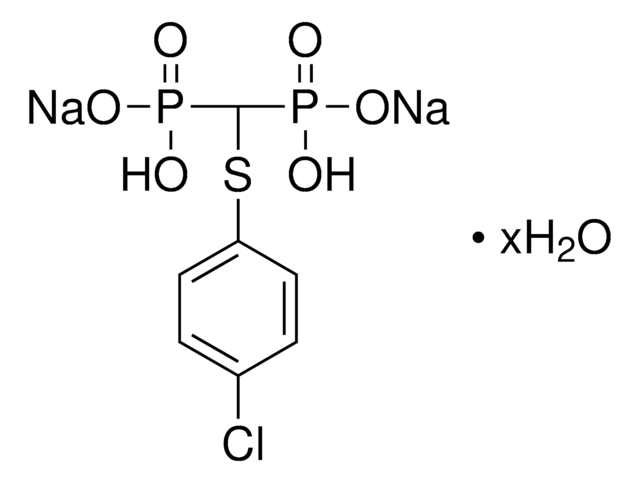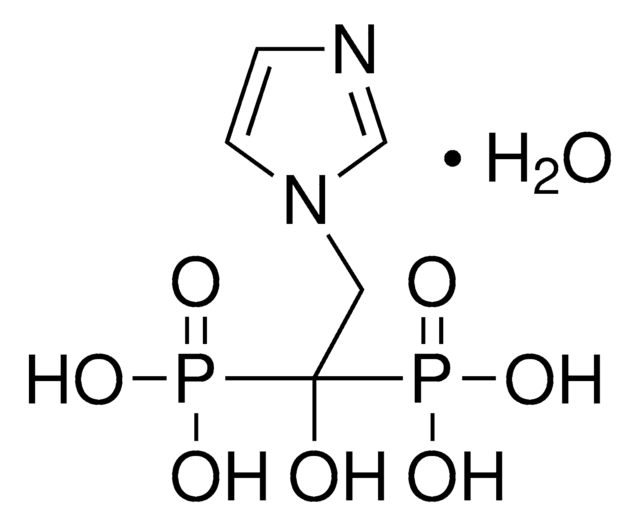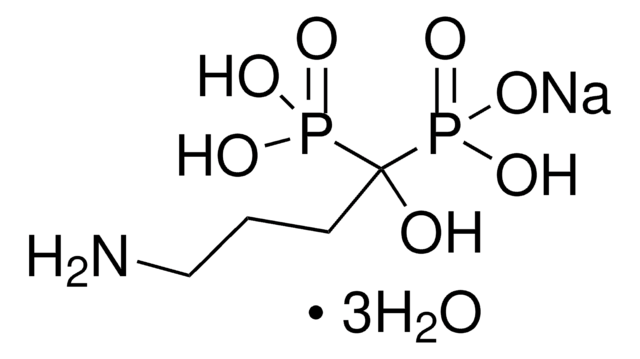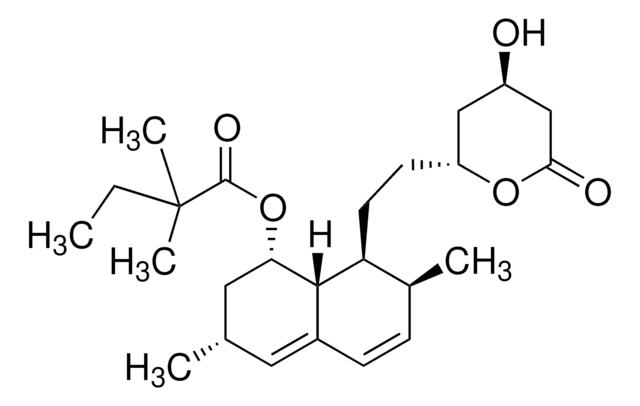I5784
Ibandronate sodium monohydrate
≥97% (NMR), solid
Synonyme(s) :
(1-Hydroxy-3-(methylpentylamino)propylidene)bisphosphonic acid sodium monohydrate, Bondronat
About This Item
Produits recommandés
Essai
≥97% (NMR)
Forme
solid
Conditions de stockage
protect from light
Couleur
white
Solubilité
H2O: >10 mg/mL
Auteur
Roche
Température de stockage
2-8°C
Chaîne SMILES
[Na+].CCCCCN(C)CCC(O)(P(O)(O)=O)P(O)([O-])=O
InChI
1S/C9H23NO7P2.Na/c1-3-4-5-7-10(2)8-6-9(11,18(12,13)14)19(15,16)17;/h11H,3-8H2,1-2H3,(H2,12,13,14)(H2,15,16,17);/q;+1/p-1
Clé InChI
LXLBEOAZMZAZND-UHFFFAOYSA-M
Informations sur le gène
human ... FDPS(2224)
Catégories apparentées
Application
Actions biochimiques/physiologiques
Caractéristiques et avantages
Code de la classe de stockage
11 - Combustible Solids
Classe de danger pour l'eau (WGK)
WGK 3
Point d'éclair (°F)
Not applicable
Point d'éclair (°C)
Not applicable
Faites votre choix parmi les versions les plus récentes :
Déjà en possession de ce produit ?
Retrouvez la documentation relative aux produits que vous avez récemment achetés dans la Bibliothèque de documents.
Les clients ont également consulté
Notre équipe de scientifiques dispose d'une expérience dans tous les secteurs de la recherche, notamment en sciences de la vie, science des matériaux, synthèse chimique, chromatographie, analyse et dans de nombreux autres domaines..
Contacter notre Service technique






